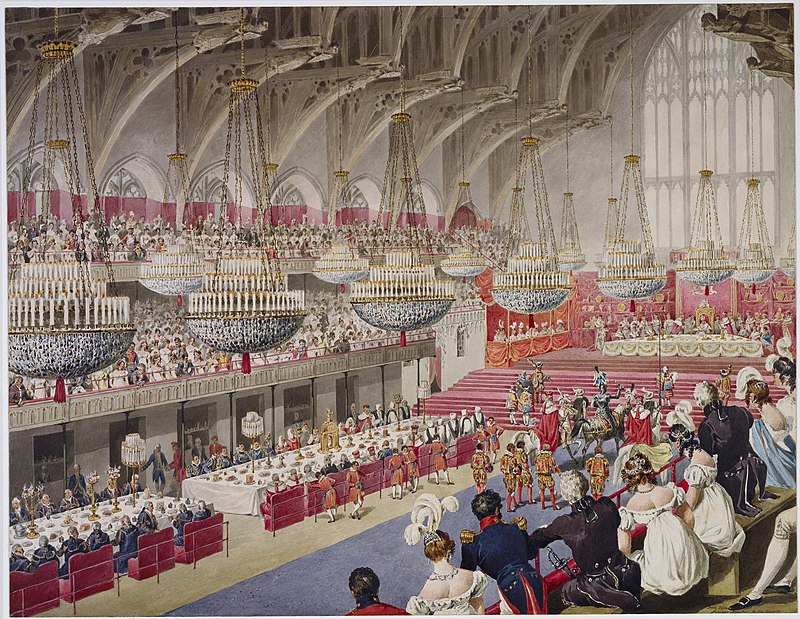
“If any person denies our most gracious sovereigns, our king and queen of England, then he is a false hearted traitor and a liar, and I, as Champion, do challenge him to single combat”.
The tradition of the monarch’s ‘Champion’ throwing down the gauntlet during the coronation banquet in Westminster Hall was introduced at the crowning of William I’s queen, Matilda in 1068, and featured in coronations until that of George IV in 1821. The tradition ended when William III dispensed with the banquet in 1831.
The first Champion was Robert de Marmion who was granted the manor of Scrivelsbury in Lincolnshire. It is a hereditary title and passed in the 14th century to the Dymoke family. And so it remains to this day although the current Captain, Francis John Fayne Marmion Dymoke, assuming he has been invited to the coronation, will simply carry a banner.
The role of Champion historically involved a degree of skill as the Champion and anyone accompanying him had to leave the hall in reverse on horseback between the banqueting tables. Lord Talbot, accompanying Dymoke at George III’s banquet in 1761, had trained his horse so thoroughly in walking backwards that it insisted on entering the Hall in reverse much to the hilarity of everyone in the Hall.
At the coronation banquet of James II in 1685 the Champion dismounted to kiss the king’s hand and tripped over in heavy armour and had to be helped up by those around him.
The banqueting feast for William III and Mary II was delayed so long that everything happened in the dark. The Champion was two hours late and on throwing down the gauntlet an old woman seemingly emerged from the gloom and replaced the gauntlet with a white glove containing a message challenging the Captain to a duel the following day in Hyde Park. A mysterious heavily built figure was seen lurking in the park the next day but the Champion did not appear.
So, throwing down the gauntlet in the form of a quiz question, whose coronation is this and who was the famous public figure?
The Dymoke of the time was a clergyman so he asked permission for his son to deputise. Not owning a horse, his son borrowed a piebald horse from a circus. He was accompanied into Westminster Hall by perhaps the most famous public figure of the time and their entrance on horseback was described as ‘certainly the finest sight of the day’.
Will you take on the challenge?
Image courtesy of Wikimedia
